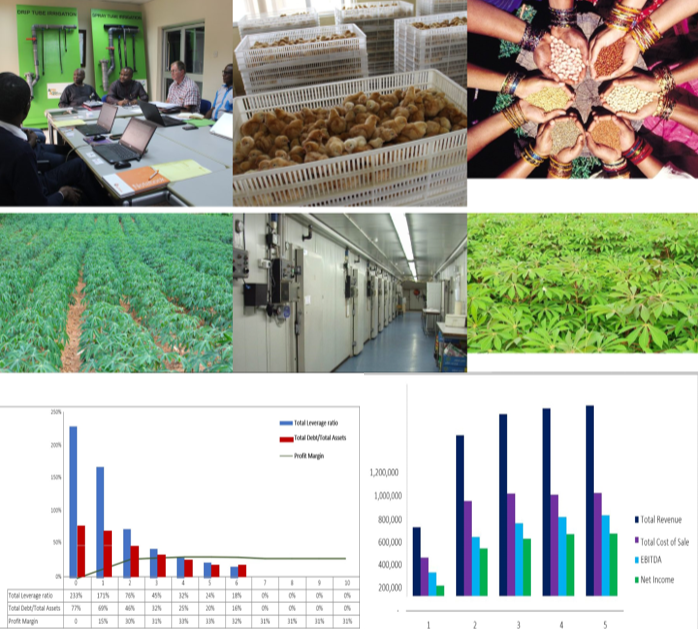Introduction
Financial planning is the backbone of any successful agribusiness. Without proper financial management, even the most promising agricultural ventures can struggle with cash flow issues, unexpected costs, and poor investment decisions. Whether you are a small-scale farmer or managing a large agro-processing company, understanding your financial needs and planning accordingly is essential for sustainability and profitability.
In this guide, we’ll break down how to assess financial needs, secure funding, and create a financial roadmap for your agribusiness. Whether you’re starting, expanding, or optimizing your agribusiness, this article will provide you with a practical and actionable framework.
Step 1: Identify Your Agribusiness Financial Needs
The first step in financial planning is to define your financial needs clearly. Agribusinesses typically require funding for:
1. Start-Up Costs
- Land acquisition or lease
- Purchase of seeds, livestock, and agricultural inputs
- Machinery, irrigation, and storage facilities
- Legal registrations and permits
2. Operational Costs
- Salaries and wages for workers
- Fertilizers, pesticides, and veterinary care
- Fuel and maintenance of farm equipment
- Marketing, distribution, and logistics
3. Growth and Expansion Costs
- Investment in modern technology (e.g., smart irrigation, drones)
- Infrastructure development, such as warehouses and processing plants
- Research and development for value-added products
- Export and international market entry strategies
Understanding these costs allows agripreneurs to plan effectively and avoid financial shortfalls.
Step 2: Create a Budget and Cash Flow Plan
A well-prepared agribusiness budget helps you manage expenses, allocate resources wisely, and plan for long-term success. Your budget should include:
✅ Fixed Costs – Land, machinery, and infrastructure
✅ Variable Costs – Seeds, fertilizers, labor, and logistics
✅ Contingency Fund – Emergency savings for unexpected risks
In addition, maintaining a cash flow projection helps in managing seasonal income fluctuations common in agribusiness. This ensures you always have funds to cover operational expenses even during low production months.
Step 3: Explore Agribusiness Financing Options
Once you have a clear understanding of your financial needs, the next step is to identify the right sources of funding for your agribusiness.
1. Personal Savings & Family Investments
If you are just starting, using personal savings or seeking support from family members can be a great way to fund your agribusiness without taking on debt.
2. Bank Loans & Agricultural Credit Facilities
Many banks offer agricultural loans with flexible repayment terms. Some of the most common agribusiness loan options include:
- Commercial bank loans (for equipment purchase and expansion)
- Microfinance loans (for small-scale farmers)
- Government-backed loans (like the Central Bank of Nigeria’s Anchor Borrowers’ Program)
3. Government Grants & Subsidies
Several government programs provide agricultural grants and subsidies to support farmers and agro-processors. These funds often come with low or zero-interest rates, making them a great option for long-term growth.
4. Investor Partnerships & Crowdfunding
For large-scale agribusiness projects, attracting private investors or utilizing agribusiness crowdfunding platforms can be an innovative way to raise capital. These options allow agripreneurs to access funding while sharing risks and profits with investors.
Step 4: Manage Risks with Agricultural Insurance
Agribusinesses face numerous financial risks, including climate change, pests, diseases, and market price fluctuations. To mitigate these risks, consider:
- Crop Insurance: Protects against losses due to weather disasters
- Livestock Insurance: Covers losses from diseases and theft
- Equipment Insurance: Ensures compensation for damaged or stolen machinery
Having the right insurance policy protects your investment and secures long-term financial stability.
Step 5: Increase Profitability with Smart Financial Strategies
To ensure sustained profitability, agribusinesses must implement financial strategies that boost revenue and minimize losses.
✅ Invest in Value Addition – Processing raw farm produce into finished goods increases market value. For example, turning cassava into flour or maize into animal feed.
✅ Diversify Revenue Streams – Adding multiple income sources like agro-tourism, training workshops, or contract farming can stabilize cash flow.
✅ Leverage Technology – Using precision farming tools, automated irrigation, and digital marketing can improve efficiency and sales.
✅ Monitor Expenses & Reduce Wastage – Conduct regular audits to identify unnecessary expenses and cut down on wastage.
Conclusion
A well-structured financial plan is essential for the survival and growth of agribusinesses. By assessing financial needs, securing the right funding, and implementing sound financial strategies, agripreneurs can achieve long-term success and profitability.
Are you looking for a customized agribusiness financial plan? Drop a comment below or contact us today!


